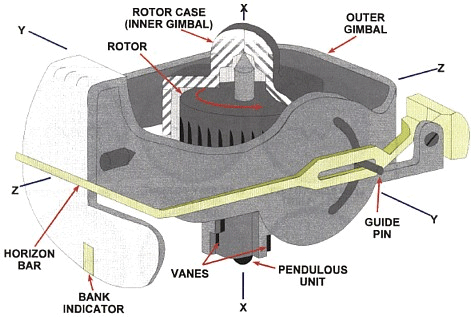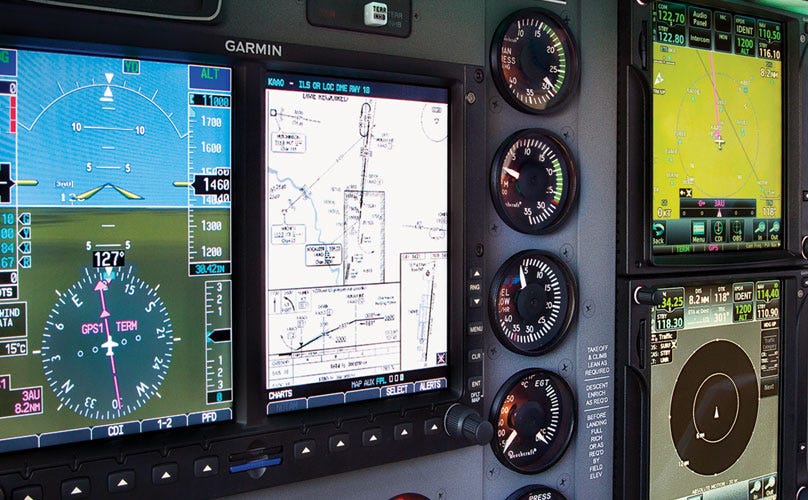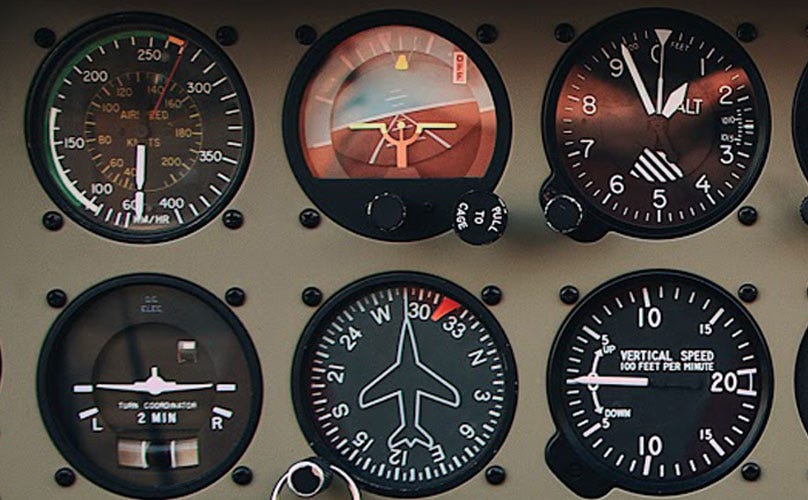
Attitude Indicator Explained: My Air-Driven Instrument Stopped Working
September 12, 2019
Many general aviation aircraft use mechanical attitude indicators that rely on a vacuum or pressure pump to spin the gyroscope inside the instrument. The vacuum pump draws air, or the pressure pump forces air, through a system of pendulous vanes that are used to erect the gyro. When the aircraft is level, the air flows across the vanes evenly. When the aircraft turns, the vanes shift, creating an imbalance in the airflow that the gyro reacts to returning to the upright position.
Some systems may use steel balls that spread out evenly when the gyro is spinning vertically. When the gyro tilts the balls shift to the low side, and the unbalanced force results in a precession force that erects the gyro. However, in some instances there is an attitude indicator error and the instrument fails. Here are a few reasons why your attitude indicator has stopped working.
Damaged Vacuum Line
The vacuum lines are a critical component of the vacuum or pressure system. They facilitate the flow of air that rotates the gyro rotor. If the lines are damaged, the gyroscope may not have sufficient vacuum to allow it to spin up to the proper speed. Check the vacuum level or pressure level at the air inlets of the gyro. A broken, collapsed or pinched line can cause your attitude gyro to operate erratically.
Vacuum or Pressure Pump Failure
As mentioned above, air is drawn into the system via the vacuum pump, which generates suction that induces the gyro to spin. Similarly, pressure pumps create pressure that cause the gyro to spin. Pressure drops could be a result of pump failure due to contamination, overworked pumps or possibly faulty installation.
If the attitude indicator fails and begins to precess, verify pressure or vacuum pump performance. Most aircraft will have a pressure or suction gauge to allow you to troubleshoot the situation.
Some aircraft have a standby pressure pump that could allow you to proceed with your flight plan. Slightly erratic behavior may be an indicator of a failing pump or a small leak because the system is not able to generate sufficient pressure.
Vane Failure
The pendulous vane system in a vacuum-driven attitude indicator keeps the gyroscope upright. If for some reason the gyro is displaced, the vanes and air jets create a precession force that drives the gyro to erect again, returning it to the vertical.
However, the system of pendulous vanes can be become worn out, leading to low-pressure problems that cause the gyro to not erect properly.
Many AI systems have a gauge showing the pressure with a green arc showing the normal parameters. Sometimes, a pump will perform better at a higher throttle setting, which could help tie the problem to the pump.
Attitude indicator failure is not uncommon for general aviation aircraft. You can have current instruments repaired or replaced, or you can upgrade to newer electronic instruments that overcome some of the shortcomings of traditional technology.

Source: The Airline Pilots
Mid-Continent Repair and Overhaul Services
Attitude indicators can fail slowly over many hours of flight, or they can fail instantly, creating a high-stress situation in the cockpit. Regular maintenance and immediately troubleshooting issues as they come up will help to prevent the latter.
For repairs and overhauls, Mid-Continent Instruments and Avionics has a wide range of attitude indicators and other instruments. We offer quality, reliability and exceptional service, all of which make us a favorite among pilots. Speak to your local avionics dealer about our repair and overhaul services. Locate an avionics dealer near you.



